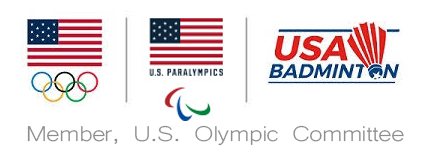

USA BADMINTON HISTORY
Badminton has a rich history in the United States. The first badminton club in this country, the Badminton Club of New York, was formed in 1878 and became a weekend meeting place for New York’s society leaders. Badminton’s popularity boomed in the 1930’s as educational institutions, YMCA’s, and hundreds of newly formed clubs offered badminton instruction. Spurring the sport’s popularity, in the 1930’s, was the avid play by several Hollywood personalities including James Cagney, Bette Davis, Boris Karloff, Dick Powell, Ginger Rogers, Joan Crawford, and Douglas Fairbanks.
The American Badminton Association was organized in 1936 (it was later changed to USBA in 1978, and then USA Badminton in 1996) by Donald Wilbur, Robert McMillan, Donald and Phillip Richardson, and all of Brookline, Massachusetts. The nation’s various badminton groups decided to unite and establish what is today’s USA Badminton. Programs from New York, Massachusetts, Chicago, and the West Coast came together to form one voice and standardized the rules and regulations of the game. The ABA held its first National Championships in 1937; and became a member of the International Badminton Federation (IBF) in 1938 and was world runner-up during this period.
The year 1949 brought the United States its first world champions, as David Freeman of Pasadena, California, won Men’s Singles at the prestigious All-England Championships (considered the unofficial World Championships until 1977, when World Championships were instituted). Americans, Clinton and Patsy Stevens, won the All-England Mixed Doubles title the same year (1949).
The United States’ international success continued between 1949 and 1967. The United States won 23 world individual championships (one Men’s Singles, 12 Women’s Singles, one Men’s Doubles, eight Women’s Doubles, and one Mixed Doubles) and three Women’s World Team Championships. The U.S. Men’s Team was also World Runner-Up during this period. Sports Illustrated acknowledged the United States’ badminton success by featuring top male player, Joe Alston, on the cover of its March 7th, 1955 issue.
The number of U.S. clubs declined slightly in the 1970’s; however, high school and collegiate play still expanded. This period also saw the introduction of lighter metal rackets, which replaced wooden rackets. Though there was a drop in U.S. badminton popularity, the sport was demonstrated at the 1972 Olympics Games in Munich.
Badminton was not officially included into the Olympic program until the 1992 Games in Barcelona, with only the Men’s and Women’s Singles and Doubles events. The U.S.A Team was able to send a full team for all events: (Women’s Singles) Erika von Heiland, Joy Kitzmiller, and Linda French; (Men’s Singles) Chris Jogis, Thomas Reidy, and Ben Lee; (Men’s Doubles) Ben Lee and Thomas Reidy; (Women’s Doubles) Linda French and Joy Kitzmiller.
The mixed doubles event would later debut in the 1996 Atlanta Olympic Games. Since then, the number of events remains unchanged. USA Badminton has been able to send at least one representative every Olympic year since the sport’s Olympic debut.
